Applications / KRAL / Marine / All marine fuel oil flowmeter applications at a glance
All marine fuel oil flowmeter applications at a glance
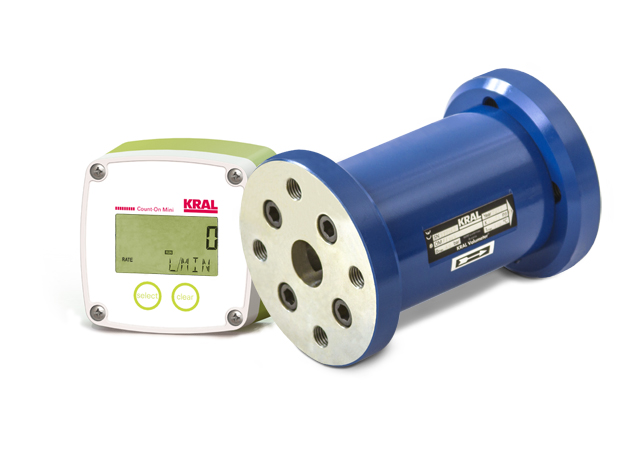
Fuel Consumption Measurement in the Booster Module.
Inexpensive precision measurement with signal transfer.Many ships run economically without elaborate
monitoring systems. Fuel consumption measurement in the booster module
is proven practice. In this measuring concept, which KRAL calls
"single-line measurement", the total of the consumptions of all the
engines and generators that are supplied by this booster module are
detected.
Engine-specific consumption measurement in real-time is not possible in
the booster module before the mixing tank. Put precisely, the refilling
quantity of the refilling tank is measured. At a sufficiently long
measuring time the refilling quantity corresponds to the fuel
consumption. These limitations are accepted for this measuring concept.
Although this is a simple and proven measurement method, measuring
precision and signal transfer are nevertheless available.
With the OMP flowmeter and the Count-On Mini display electronics KRAL
offers an attractive solution for single-line measurement in the booster
module. The fuel consumption can be read directly at the flowmeter and
is available as a signal for an external on-board display system.
Ship owners who wish or require more comprehensive measuring will find
systems at KRAL that acquire the data of all the fuel consumers
individually in real-time.
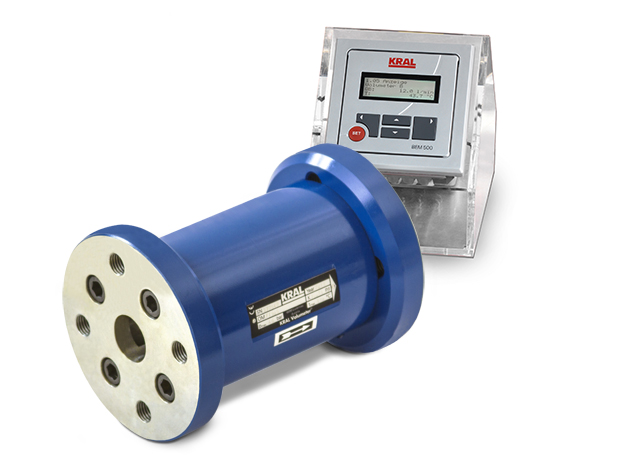
Engine-Specific Fuel Consumption Measurement.
Directly at the engine where others cannot measure.Engine-specific consumption measurement
often demands the installation of the flowmeters in the fuel
circulation line, namely in the feed and return lines. KRAL
calls this concept "differential measurement". So close to the
engine rough operating conditions prevail. The hot heavy oil
with temperatures of
150 °C to 160 °C pulsates in heavily vibrating piping.
KRAL flowmeters are robust precision devices that are designed
in accordance with the loads agreed with us.
At full load the circulation rate is 3-4 times higher than the
consumption. Under partial load or slow-steaming the circulation
rate increases. The measuring error increases with the
circulation rate. High-precision flowmeters are required in
particular at slow-steaming in order to achieve good precision
of the overall system.
Thanks to the quality of their data, KRAL systems are
particularly suitable for integration into on-board performance
monitoring systems.
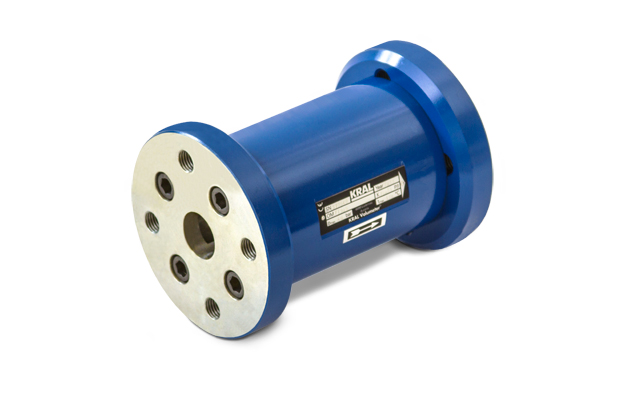
Consumption Measurement Burners/Boilers.
Low fuel consumption and low emissions.The burner control system automatically
sets the optimum operating point by using the consumption value.
At the optimum operating point the fuel consumption and the
emissions are lowest. Even the slightest deviation from the
optimum operating point results in worse values. High measuring
precision is therefore required from the consumption
measurement. Depending on the layout of the fuel consumption
system, KRAL offers consumption measuring systems for
single-line or differential measuring.
We solve this important measuring task with the KRAL flowmeter
of the OMP series and the evaluation electronics best suited to
the application. Pressure stages of up to 40 bars are covered by
our standard devices – but we also have the suitable solution
for higher system pressures.
The consumption display is realized either directly on the
flowmeter or as a transmitted variant. Data transmission to
other display systems is very easy to realize with our
standardized signals.
Renowned customers are already using our solutions as an OEM
product and are very satisfied with the reliability of the
products and the KRAL Service.
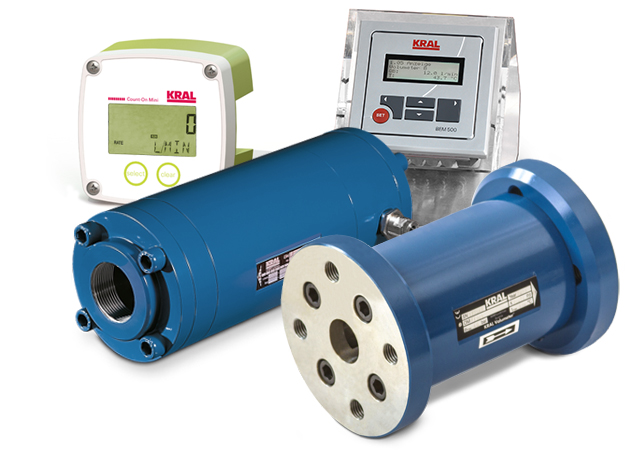
Cylinder Lubricating Oil Measurement.
Replace sight glasses and tables by measurements.The required cylinder lubricating oil quantity
depends on the sulfur content of the fuel. The sulfur content varies
with the fuel sorts and the bunker location. Engine manufacturers
specify the lubricating oil quantity by means of a table.
Technicians on board derive the value of the sulfur content from the
Bunker Delivery Note (BDN), and the associated lubricating oil quantity
from the table. The table value is entered into the lubricating oil
system. The lubricating oil systems do not offer measurement of the
lubricating oil. Instead the board technicians have to trust that the
entered lubricating oil quantity is correct.
Often the technicians help themselves by making markings on the sight
glass of the lubricating oil tank in order to estimate the amount of
lubricating oil injected. Ship owners know that if the amount of
lubricating oil is too high, deposits on the pistons and subsequent
damage results. Evidently the table values are often too high. In
addition to cylinder damage, excessive lubricating oil results in higher
costs.
KRAL recommends giving up the hope of correct table values and
estimation using the sight class and replacing them by reliable
measuring with KRAL flowmeters.
Measuring here is a demanding task because small amounts of lubricating
oil have to be measured. In addition, the multi-pistonc lubriating oil
pumps cause pressure surges in the lubricating oil lines. The oil flow
pulsates on the one hand through the reciprocating piston movements and
on the other hand through sheared-off lubricating oil quantities under
high pressure at the delivery end of the respective piston stroke. Under
the influence of the pressure surges, the lubricating oil time-and-again
flows briefly against the specified flow direction. KRAL flowmeters
measure in both flow directions, recognize return flows, if they are
equipped with the corresponding sensor equipment, and take these into
consideration during measured-value generation. Only this type of
measurement ensures reliable and precise measured values. KRAL cylinder
lubricating oil measurement pays off within a short time since
lubricating oil is expensive.
In order to optimize ship operating costs many ship owners rely on
performance monitoring systems. The aim is to have full control over the
consumption specifications in order to achieve the efficiency target
that was calculated and specified during the ship construction during
real ship operation as well, and furthermore to recognize optimization
potential. KRAL flowmeters of the OMP series with electronic unit allow
display directly on site. The measured values are furthermore available
in optimal data quality for simple interfacing with monitoring systems.
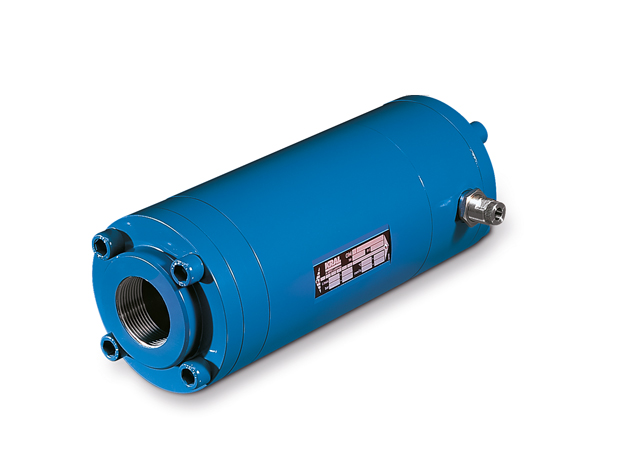
Pilot Fuel Injection for Dual Fuel Engines – Differential Measurement.
High circulation rate at low consumption.At dual-fuel engines (oil / LNG) and LNG engines a
small amount (1% – 3%) of diesel oil is required for the ignition in
order to start combustion optimally. This diesel oil (pilot fuel) is
circulated in a circuit before the injection system.
The circulation rate is quite a bit higher, namely 10-15 times higher
than the actual consumption. Since according to Gaussian error
propagation the system error increases strongly at large differences
between consumption and flow rate, it is particularly important here to
use high-precision flowmeters in order to keep the system error as small
as possible.
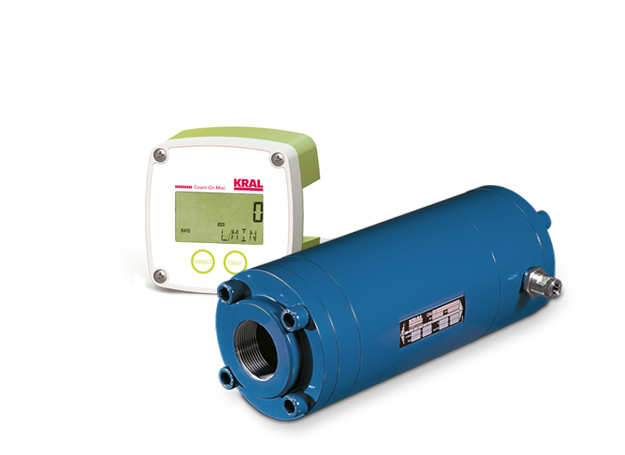
Bunkering for DO.
Reliable and robust measurements even at pressure surges.To achieve exact quantity acquisition while the
ship is being loaded with diesel oil, we use our tried-and-tested OMG
flowmeter with which flow rates of up to 300 m³/h can be measured. The
OMG flowmeter is characterized by its robustness and reliability as well
as its high precision and is the optimal solution when comparison of the
refueled quantity with the measuring station on land is required.
The quantity display is realized either directly on the measuring
instrument or as a transmitted variant. Compensation of the volume is
realized with the temperature measured directly in the medium by means
of the temperature-volume characteristic curve of the medium.




